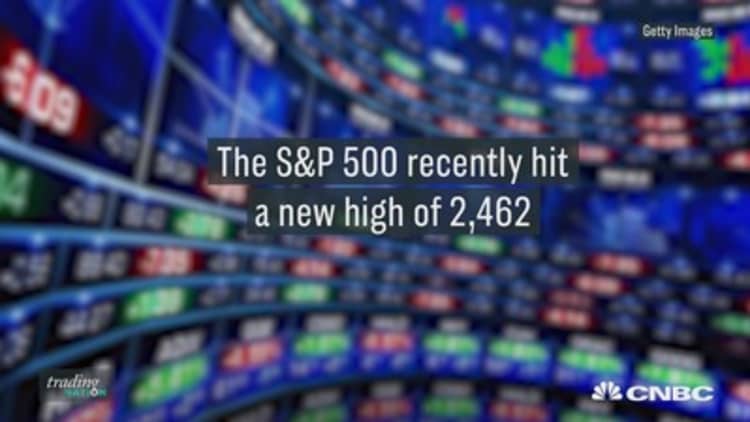
The is trading just below its all-time highs, and one market strategist sees further gains ahead.
"The No. 1 thing I'm watching right now is the S&P 500 breaking out above its all-time high," Bill Baruch, senior market strategist at iiTrader, said Monday on CNBC's "Trading Nation."
His target is 2,507, which he surmised by going back to the days of the financial crisis. Before the market collapsed in 2007, it went to a high of 1,586.75, he pointed out. The S&P 500 then hit a low of 665.75 two years later.
"If you take that range of 921 points, and add that to the 2007 high of 1,586.75, you would get a target of 2507.75 on this entire move over the last 10 years," he said.
Giving Baruch a bit of pause about the state of the rally is the Federal Reserve's tightening cycle, along with the central bank's plan to wind down its massive balance sheet this year and uncertainty surrounding policy in Washington.
"However, on a technical basis, the market should define this range up to 2,500. Investors should use caution, as always," he said, adding that investors ought to stay in this trade, betting on further gains, as long as the market maintains its close above the 2,440 level.
The S&P 500 closed barely negative Monday, as did the Dow Jones industrial average. The Nasdaq composite extended its gains to post a seven-session win streak.
Meanwhile, technical analysts at Bank of America Merrill Lynch wrote in a Monday note that the S&P 500's recent consolidation projects to a range between 2,505 and 2,530. Key support, according to the team led by Stephen Suttmeier, can be marked by a range between 2,435 and 2,429.
"Sustaining Friday's push to new all-time closing and intraday highs would keep these upside price projections in focus as an area to lighten up on U.S. equities moving into the weak three-month period of August-October," Suttmeier wrote.





